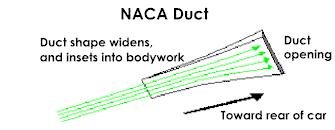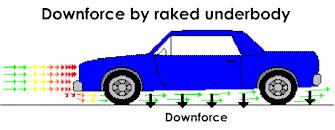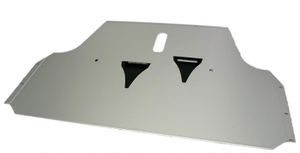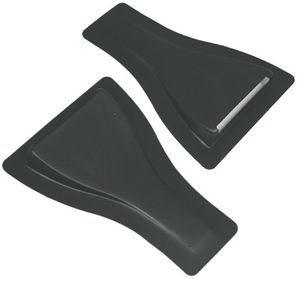NACA Duct
NACA Duct
NACA stands for "National Advisory Committee for Aeronautics".
The purpose of a NACA duct is to increase the flowrate of air through it while not disturbing the boundary layer. When the cross-sectional flow area of the duct is increased, you decrease the static pressure and make the duct into a vacuum cleaner, but without the drag effects of a plain scoop. The reason why the duct is narrow, then suddenly widens in a graceful arc is to increase the cross-sectional area slowly so that airflow does separate and cause turbulence (and drag).
NACA ducts are useful when air needs to be drawn into an area which isn't exposed to the direct air flow the scoop has access to. Quite often you will see NACA ducts along the sides of a car.
The NACA duct takes advantage of the Boundary layer, a layer of slow moving air that "clings" to the bodywork of the car, especially where the bodywork flattens, or does not accelerate or decelerate the air flow. Areas like the roof and side body panels are good examples. The longer the roof or body panels, the thicker the layer becomes (a source of drag that grows as the layer thickens too).
Anyway, the NACA duct scavenges this slower moving area by means of a specially shaped intake. The intake shape, shown below, drops in toward the inside of the bodywork, and this draws the slow moving air into the opening at the end of the NACA duct. Vortices are also generated by the "walls" of the duct shape, aiding in the scavenging. The shape and depth change of the duct are critical for proper operation.
NACA Ducting on the Elise
The Elise has NACA ducts on the engine undertray that aid in the cooling of the exhaust manifold/engine sump
Eliseparts Replacment NACA Ducts
Some Information © Gmecca



